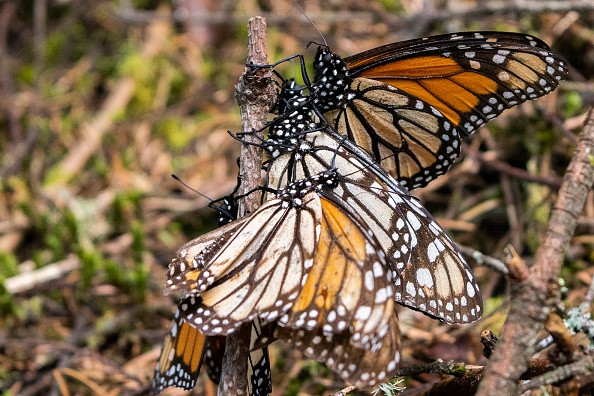Last year wasn't a good one for monarch butterflies and visitors in central Mexico, so local farmers and butterfly guides are hoping for a better year this year.

Hope For an Increase in Monarch Butterfly Population
According to experts, it is too early to count the number of monarch butterflies moving to forests west of Mexico's capital from the United States and Canada every year. But in December, there will be an official survey.
Farmers who control large swaths of pine and fir forest where the monarchs congregate have found that the butterflies have become an essential source of revenue. Several orange-and-black monarchs have already taken up residence in trees for the winter.
Farmer and tourist guide Silvestre de Jess Cruz, 49, is hoping for a better year for both butterflies and tourists this year after last year's terrible decline in tourism which was caused by the pandemic, according to Phys.org.
De Jess Cruz grows maize and oats on his little farm during the off-season, which begins in November and ends in March. However, the revenue generated by these crops is little.
This year, only approximately 40,000 individuals visited the dozen or so butterfly wintering areas, down from 80,000 visitors in past years, due to the coronavirus outbreak.
Also Read: Wing Pattern Sheds Light On Birthplace Of Migrating Monarch Butterflies
The Return of Visitors at El Rosario Reserve
As a yoga enthusiast who lives in Mexico City, Martha Echeverria found the tranquility of the El Rosario reserve to be a major attraction. One can hear the cracking of the fir limbs, as well as the rustling of the leaves in the wind, since visitors are asked to keep their voices down to avoid disturbing the butterflies.
As a result of the pandemic, tour guides are taking additional measures, such as forcing tourists to wear masks and checking their temperatures before allowing them inside the park.
Since visitors must ascend several hundred meters (yards) of steep slopes to reach the ultra-protected places where the butterflies congregate, an already high altitude, this offers some unique obstacles.
Visitors from the state of Puebla such as Ricardo Rodrguez, who managed to climb to the summit despite not receiving much regular exercise, expressed a need for a little more room to remove their masks.
It's a good idea to wear a face mask for everyone's safety, however there are portions of the climb when you don't have enough oxygen, so the trip up should be better planned. It would be nice if they could spread us out a little more so that you could take it off for a short time and receive more oxygen.

Threats to Monarch Butterfly
Last year's monarch population decreased due to a variety of causes. There are several risks to the monarch's ability to migrate, including drought, extreme weather, loss of habitat (particularly milkweed), and pesticide and herbicide usage.
Additionally, illegal logging and tree loss due to disease, drought and storms are still a problem in the reserve.
At this point, it's too early to know whether this year will see an increase in the number of butterflies, or visitors to the protected areas, said regional director for the National Council on Protected Areas, Gloria Tavera.
Related Article: Pacific Grove Counted Thousands More Monarch Butterflies This Year Than in 2020
For more news, updates about monarch butterflies and similar topics don't forget to follow Nature World News!
© 2024 NatureWorldNews.com All rights reserved. Do not reproduce without permission.



![Climate Change is Reducing Dust Levels Worldwide as Arctic Temperature Warms [Study]](https://1471793142.rsc.cdn77.org/data/thumbs/full/70320/280/157/50/40/climate-change-is-reducing-dust-levels-worldwide-as-arctic-temperature-warms-study.jpg)

